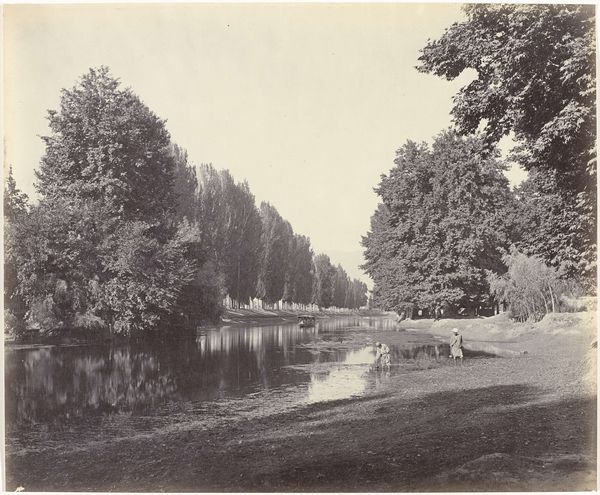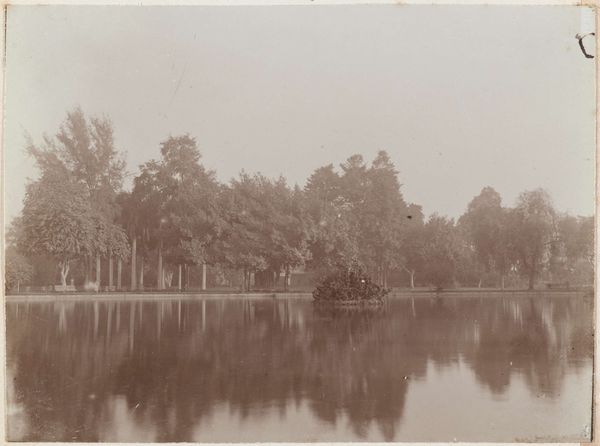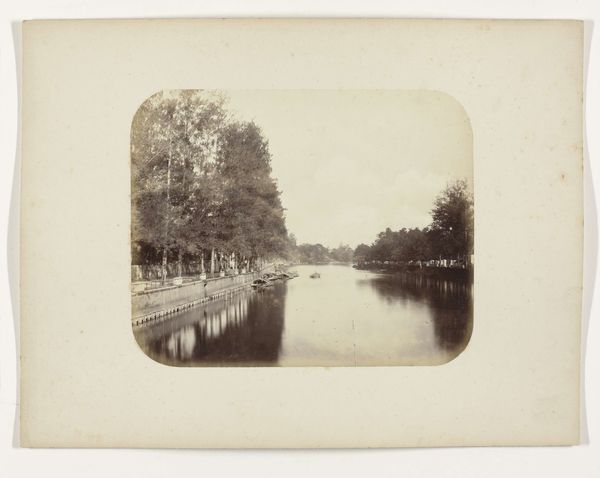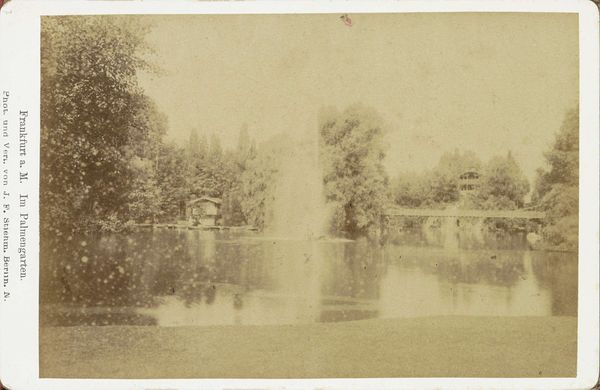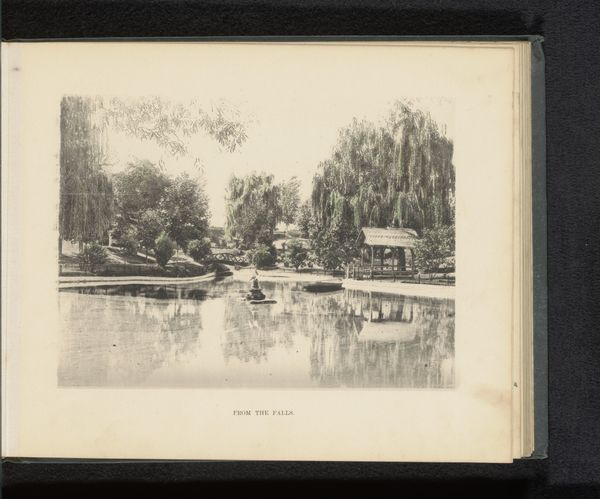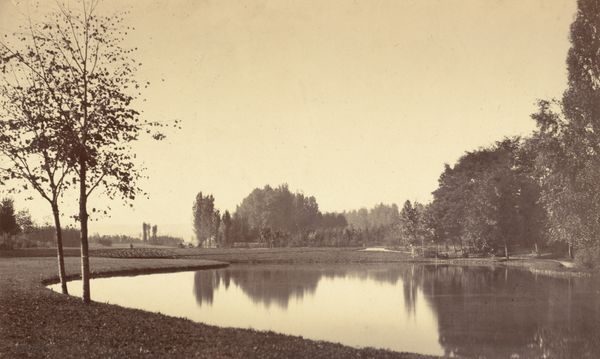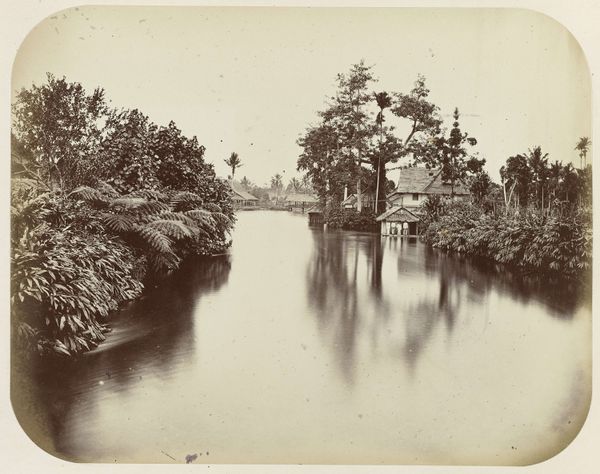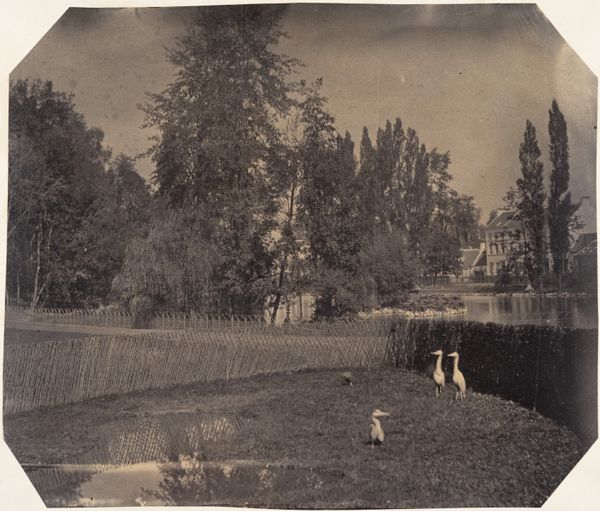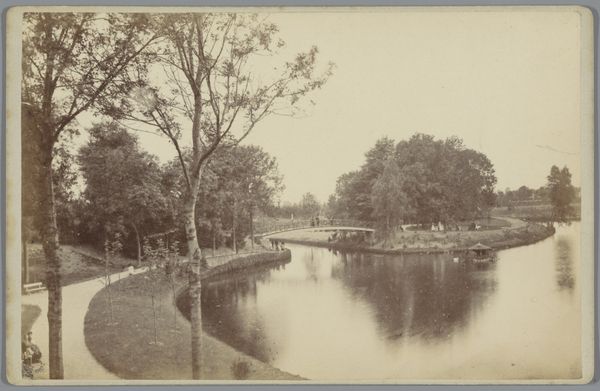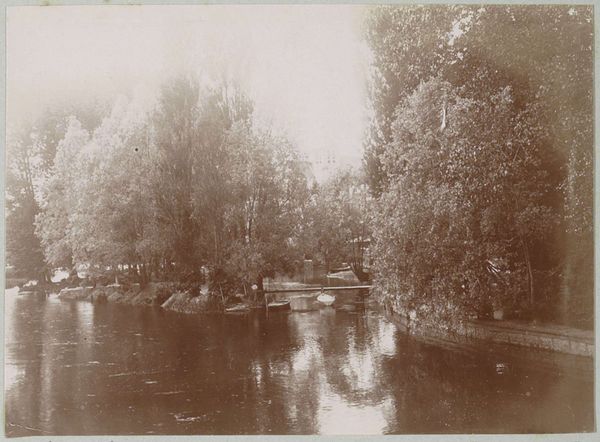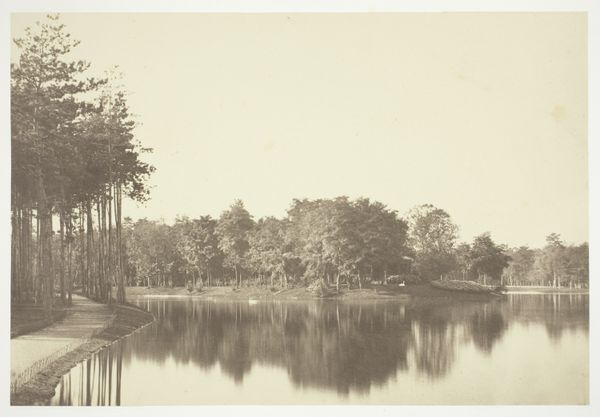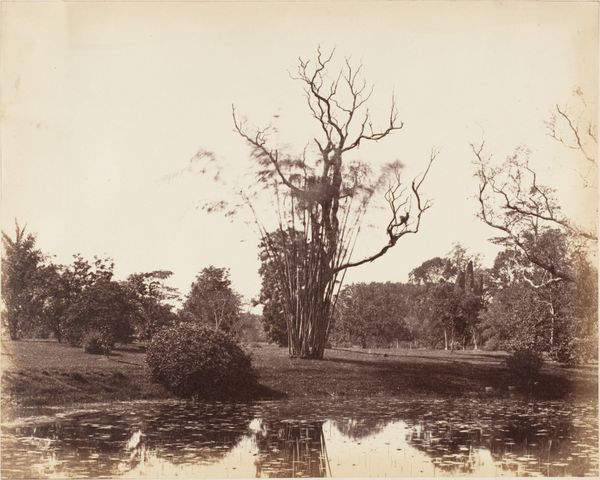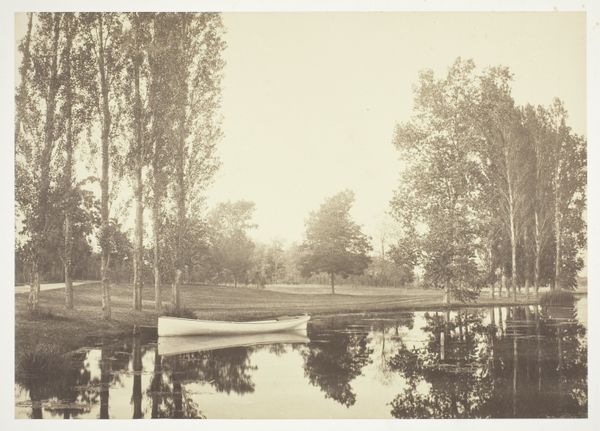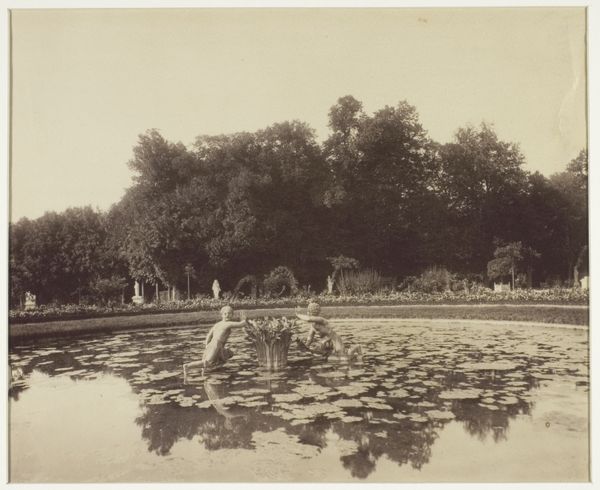
Jardin zoologique de Bruxelles 1854 - 1856
0:00
0:00
plein-air, photography, gelatin-silver-print
#
garden
#
natural shape and form
#
16_19th-century
#
organic shape
#
plein-air
#
landscape
#
photography
#
orientalism
#
gelatin-silver-print
#
watercolor
#
realism
Dimensions: Image: 8 11/16 × 10 13/16 in. (22.1 × 27.5 cm) Sheet: 13 3/8 × 18 1/8 in. (34 × 46 cm)
Copyright: Public Domain
Editor: This is "Jardin zoologique de Bruxelles" by Louis-Pierre-Théophile Dubois de Nehaut, taken sometime between 1854 and 1856. It's a gelatin silver print, and the soft, almost painterly quality is striking. What’s interesting about this photograph from a materialist perspective? Curator: Let's consider the photograph not just as a representation, but as a manufactured object. Think about the materials involved: the gelatin silver emulsion, the paper support, and the chemicals used in the development process. Each element contributed to the final product, with industrial processes making photography increasingly accessible during this time. What were the implications of that accessibility? Editor: I guess, with more affordable and portable materials, photography became less exclusive to the upper classes. It changed how people could perceive and record their experiences. Curator: Precisely! Consider the ‘plein-air’ aspect as well. This aesthetic reflected a new, more casual culture of landscape engagement, in contrast to the very posed portraiture we saw during the time. How does the “organic shape” and the rendering of the animal garden connect to broader systems of leisure and spectacle being produced at the time? Editor: So, it’s not just about the pretty picture but the technology, the labour, and the consumption that went into producing this specific kind of image? It connects to how society was changing, too, becoming more oriented to leisure and observation. Curator: Precisely. By looking at the materials and techniques, we gain insight into the social and economic forces shaping art production and reception during that time. Editor: This has broadened my perspective, realizing the layers beneath the surface. Curator: Indeed! A materialist approach helps to question established art values by bringing these unseen systems to light.
Comments
No comments
Be the first to comment and join the conversation on the ultimate creative platform.
